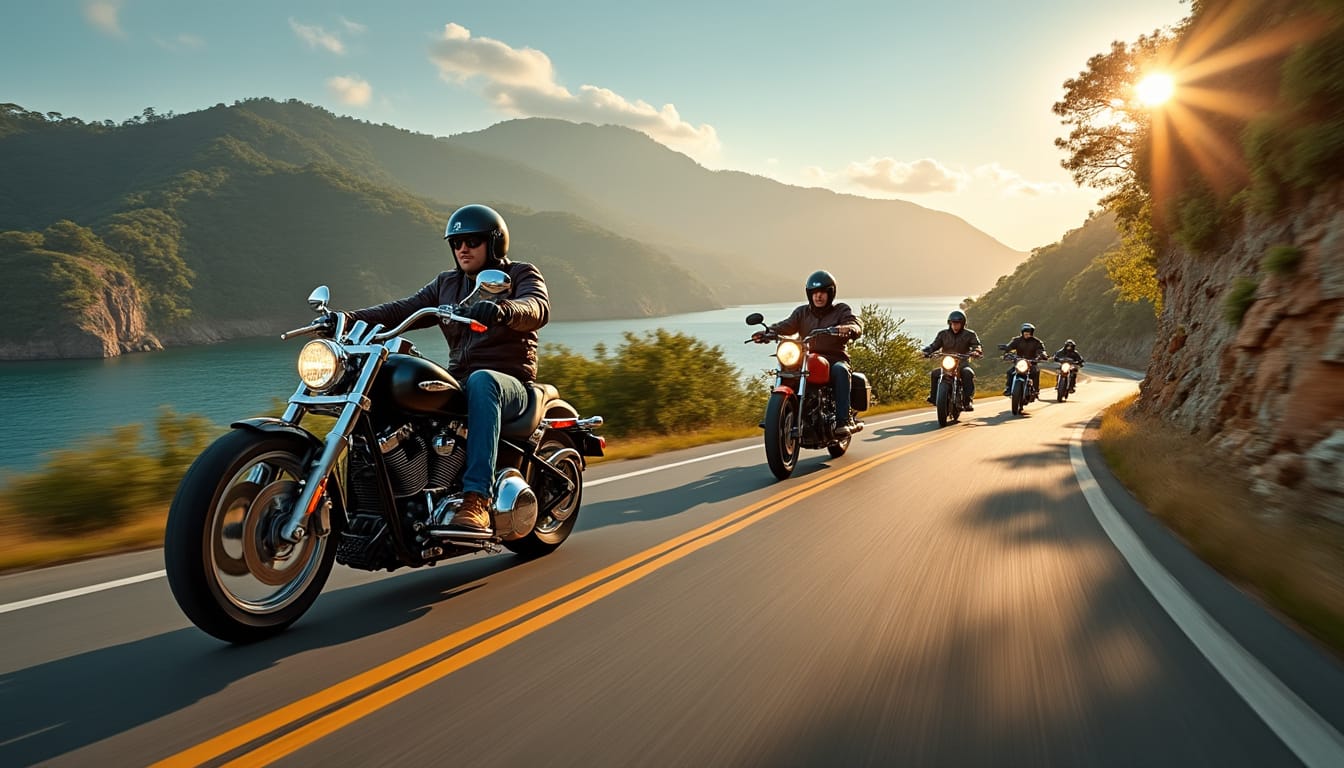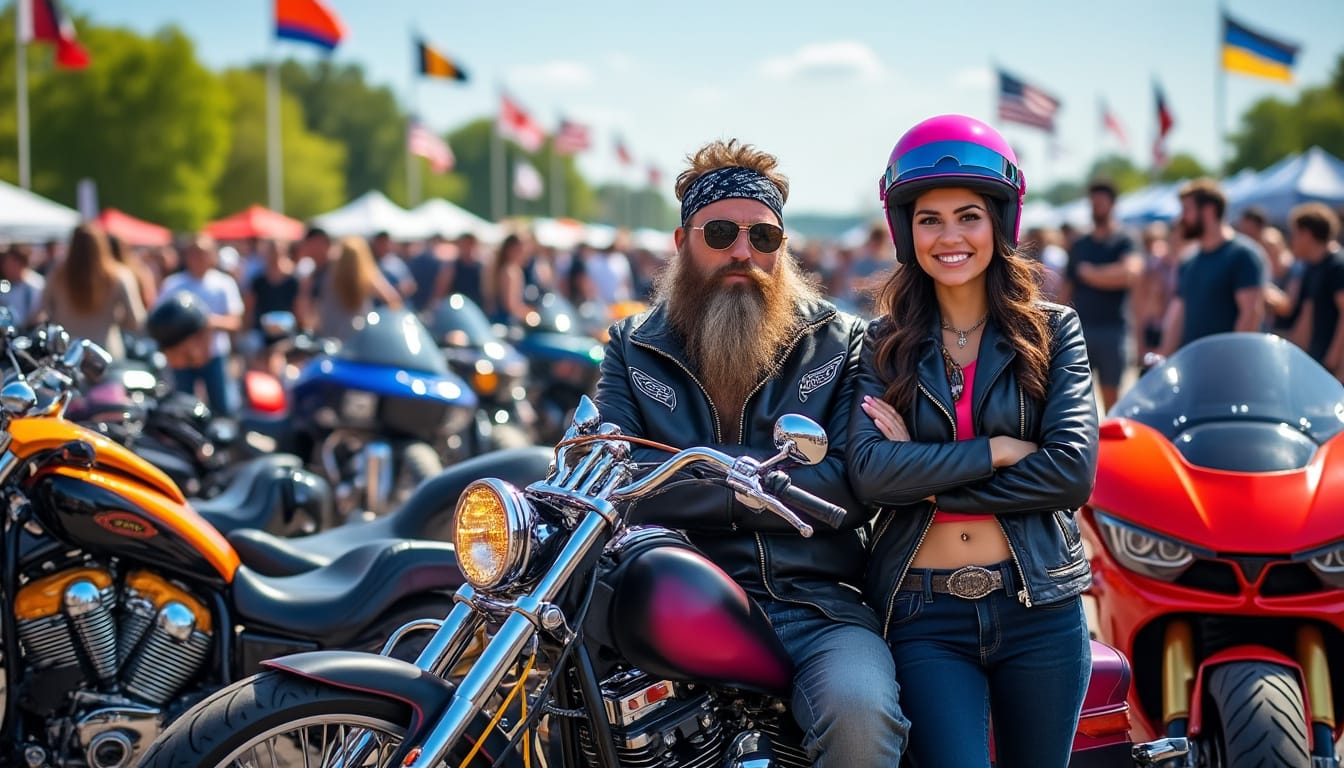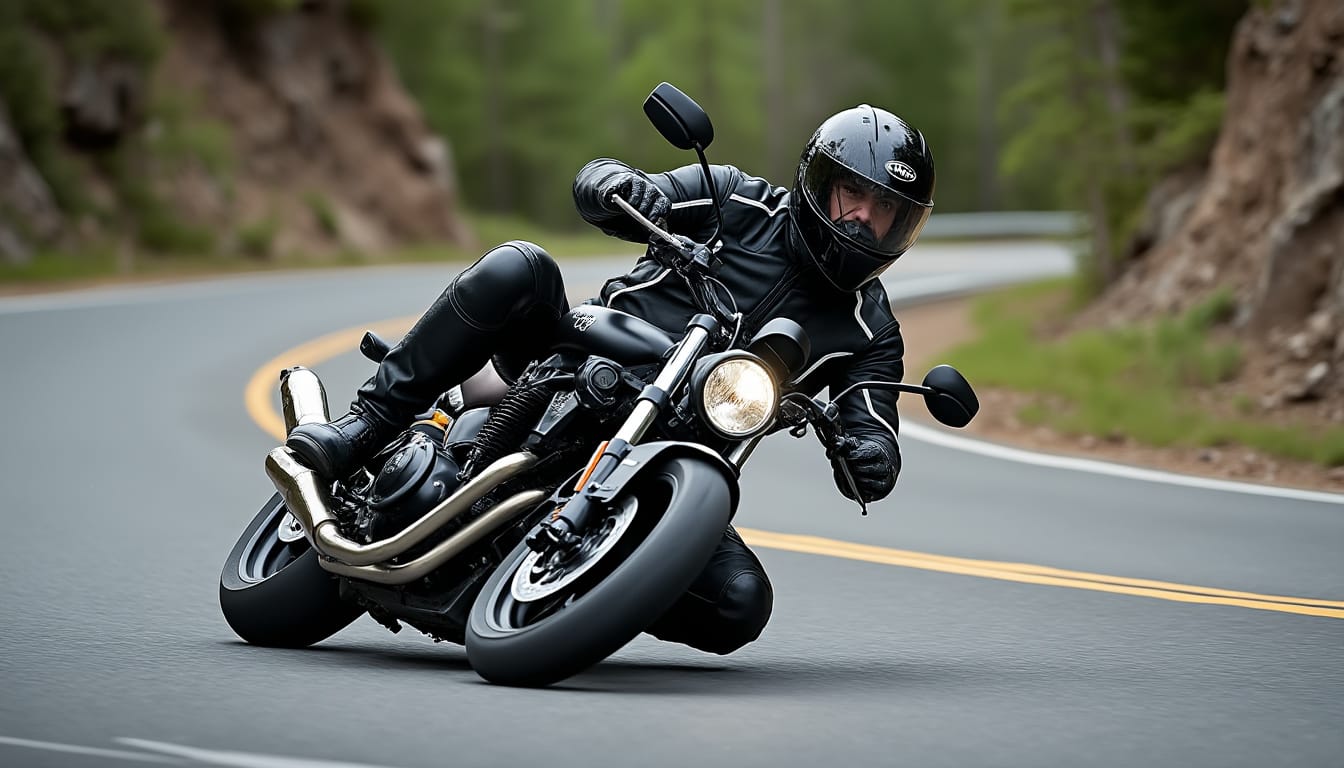Riders or motorcycle drivers: between passion, stereotypes, and legal framework

In a world where motorcycles evoke passion and adrenaline, a persistent debate surrounds the identity of motorcyclists and motorcycle riders. What really distinguishes them? This report explores the fascinating worlds of these two groups, highlighting their passions, the often unfounded stereotypes that surround them, as well as the legal framework that governs their practice. The notion of a motorcyclist goes beyond mere motorcycle riding; it is embedded in a vibrant and sometimes controversial culture. Let us enter this universe where the roar of engines resonates with commitment, lifestyle, and a set of norms to adhere to.
The passions that drive motorcyclists: more than just riding
The passion of motorcyclists is not limited to simply riding a motorcycle. For many, it is a way of life, a community that shares common values such as freedom or adventure. Motorcyclists often see their vehicle as an extension of their personality. This bond between the rider and their machine is undeniably strong. A motorcyclist never rides just to get from one place to another; they ride their motorcycle to feel alive.

The different communities of motorcyclists
Within the motorcyclist community, sub-groups can be identified. Here are a few examples:
- The long-distance riders: These motorcyclists are often passionate about long distances. They prefer journeys on major highways and enjoy the time spent on the road.
- The sporty riders: These riders prioritize speed and performance. Brands like Ducati or Kawasaki offer them machines suited to their expectations.
- The customizers: For them, the motorcycle is a blank canvas. They spend hours transforming their vehicle, and the brand Harley-Davidson is often highlighted in this category.
- The adventurers: These motorcyclists prefer off-the-beaten-path routes, discovering wild and inaccessible landscapes, often aboard off-road motorcycles.
The link between passion and culture
This passion for motorcycles goes beyond riding; it is often accompanied by a set of cultures. Motorcyclists gather at events such as rallies or conventions, where they share stories, safety tips, and strengthen their network. These gatherings create a strong sense of belonging. In addition, fashion and accessories hold their own importance. Leather jackets, helmets adorned with designs, and tattoos are all symbols of this culture.
| Type of community | Characteristics | Popular brands |
|---|---|---|
| Long-distance riders | Enjoy long distances, comfort, and autonomy | Honda, BMW Motorrad |
| Sporty riders | Speed and performance, often on track | Ducati, Kawasaki |
| Customizers | Personalization and artistic expression | Harley-Davidson, Royal Enfield |
| Adventurers | Exploration of varied terrains | KTM, Triumph |
Stereotypes surrounding motorcyclists: deconstruction or truth?
Motorcyclists are often surrounded by clichés that, while sometimes based on facts, do not always reflect the diversity of the group. The prejudices associated with this community can range from the image of the rebellious rider, the danger on the road, and the heroic or romantic figure of the lone traveler. These stereotypes are often the result of a misunderstanding of what it really means to be a motorcyclist.

The clichés to deconstruct
Analysis of common stereotypes:
- Motorcyclists are criminals: This stereotype often emerges from media portrayals. However, the majority of motorcyclists respect the traffic code and take safety measures.
- They are only men: Although historically mainly male, more and more women are taking to the roads, demonstrating that the passion for motorcycles transcends gender.
- Motorcycles are dangerous: Although riding a motorcycle carries risks, with the use of appropriate safety gear, these risks can be significantly reduced.
The effects of stereotypes on the community
The prejudices directed at motorcyclists can lead to negative effects on their image, even on public roads. Many motorcyclists face discrimination, which can discourage some of them from revealing themselves as members of this community. This stigma can also lead to a general mistrust between motorcyclists and other road users.
It is essential that these stereotypes are deconstructed within society to create constructive dialogue. Increasing awareness of road safety and educating about the differences between motorcyclists and motorcycle riders could contribute to peaceful coexistence.
| Stereotype | Reality | Impact |
|---|---|---|
| Motorcyclists are criminals | Most respect traffic laws | Creation of mutual distrust |
| They are only men | A growing share is represented by women | Education needed to change perceptions |
| Motorcycles are dangerous | Risks can be reduced with proper precautions | Excessive fears of non-motorcyclists |
The legal framework governing motorcyclists in 2025
The legal framework concerning motorcyclists is constantly evolving, often adjusting rules and standards to preserve safety on the roads. In 2025, new regulations are implemented, influencing both motorcyclists and motorcycle riders. The legislation varies from country to country, but general trends can be observed, including stricter safety requirements and measures to improve coexistence among different road users.

New safety regulations
In 2025, several new regulations emerged, aimed at increasing the safety of motorcyclists. Here are the main ones:
- Mandatory safety equipment: Motorcyclists must wear specific approved gear.
- Enhanced technical inspections: Frequent roadside inspections to ensure that motorcycles meet all safety standards.
- Ongoing training: Motorcyclists must undergo regular road safety training to maintain their driving license.
The challenges of the legal framework
Despite these improvements, many challenges remain in the implementation of the regulations. Many motorcyclists feel that the regulations can sometimes be restrictive or poorly suited to their needs. Furthermore, the perception that they should be controlled like cars can be unfair, as motorcycles have unique characteristics that deserve special attention.
Additionally, access to information regarding new laws is sometimes difficult. Clearer communication campaigns would be beneficial for motorcyclists to understand their rights and obligations.
| Regulation | Description | Impact on motorcyclists |
|---|---|---|
| Safety equipment | Mandatory use of approved gear | Increased awareness of safety |
| Technical inspections | Regular inspections of motorcycles | Increased safety on the roads |
| Ongoing training | Regular road safety programs | More responsible driving |
women and motorcycles: a parallel to draw between passion and stereotypes
The world of motorcycles is often perceived as predominantly male. However, a notable trend has emerged over the years: more and more women are asserting themselves in this universe, thereby challenging the stereotypes that surround them. In 2025, their growing participation deserves to be highlighted, as it paves the way for a new dynamic in motorcyclist culture.
The challenges faced by women motorcyclists
Although the number of women passionate about motorcycles continues to grow, they still encounter various obstacles. These challenges may include:
- Access to equipment: Many manufacturers do not offer options tailored for women, complicating the personalization of their riding experience.
- Stigmatization: Several women find that they are often not taken seriously by male motorcyclists, which can be discouraging.
- Lack of representation: Women motorcyclists remain underrepresented in the media, which can contribute to perpetuating false ideas about their presence in this culture.
Advances for women motorcyclists
However, notable progress has been made. Brands such as BMW Motorrad and Honda are now introducing motorcycle models specifically designed to meet the needs of women. Moreover, groups and associations of women motorcyclists are emerging, providing a space for support, sharing, and learning for those who dive into this universe.
| Challenge | Potential solution | Expected impact |
|---|---|---|
| Access to equipment | Creation of specific lines for women | More available options |
| Stigmatization | Education and awareness | Reduction of prejudices |
| Lack of representation | Increase the visibility of women in media | Encouragement of inclusion |
Leave a Reply

Articles relatifs